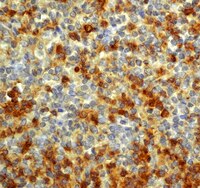Directed glia-assisted angiogenesis in a mature neurosensory structure: Pericytes mediate an adaptive response in human dental pulp that maintains blood-barrier function.
Ramin M Farahani,Babak Sarrafpour,Mary Simonian,Qing Li,Neil Hunter
The Journal of comparative neurology
520
2012
Show Abstract
The specialized tightly controlled microcirculation of craniofacial neurosensory organs is an essential evolutionary adaptation and yet a dilemma where angiogenic remodeling occurs. Despite extreme plasticity of neurosensory structures, the capacity to reconcile barrier phenotype of the microcirculation with an angiogenic cascade is not known. Here we provide primary evidence for such a response in an elemental neurosensory structure, human dental pulp, following chronic carious insult. In response to hypoxic challenge neurosensory odontoblasts express hypoxia-inducible factor-1α and notch-1. Associated radial rearrangement of astrocyte-like telacytes that communicate through a cell-poor zone with the microvasculature is observed. Activated pericytes characterized by expression of α-smooth muscle actin are located adjacent to the telacyte attachment to the vasculature. In this location, endothelial expression of sonic hedgehog parallels expression of notch-1 by pericytes. The angiogenic response is initiated by pericyte contraction and altered endothelial polarity and proliferation leading to intussusception of endothelial cells and extensive remodeling of basement membrane with upregulation of laminin-8 and laminin-5. These responses guide intravascular loop formation that maintains both intact basement membrane and tight junctions. This initial phase is followed by formation of anastomoses that enhance the hemodynamic capacity of the intravascular loops. The formation of anastomoses is mediated by extension of cytonemes from pericytes guided by MHC-II(+) /CD-163(+) microglia aligned with the telacytes. The cytonemes seek out pericytes on adjacent intravascular loops to initiate migration of endothelial cells. These findings support a new paradigm for understanding angiogenic capacity of neurosensory structures and aberrations of this response manifest as neurovasculopathies. J. Comp. Neurol. 520:3803-3826, 2012. © 2012 Wiley Periodicals, Inc. | 22678627
 |










